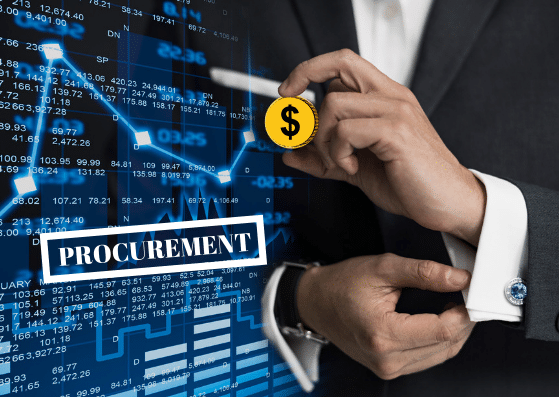Every successful business relies on a reliable and high-quality supply of energy. Without dependable electric services, integral parts of a company, such as communications, production, safety features, and employee amenities, become unavailable. So, how does a business acquire steady electric services without sacrificing costs in today's competitive market?
Summary
- Procurement involves obtaining goods or services like energy. An effective procurement consultant executes a plan to get what’s needed at the lowest cost.
- Energy procurement involves four core players – the business, supplier, vendor, and broker. The broker aids negotiations between the other three.
- Competitive bidding allows businesses to compare multiple energy vendor options. Factors like price and distribution determine the best fit.
Energy procurement ensures that your company receives a state-of-the-art energy supply without compensating on price. To further explore the possibilities of energy procurement services, call Navigate Power at (888) 601-1789.
What is Procurement?
Procurement is the process of obtaining a good or service. A person, entity, or business invests in a product for partial or full ownership to benefit their business.
What is Effective Procurement?
Effective procurement is executing a plan to successfully obtain the good or service for the least cost. The company procuring should have a clear understanding of:
- How the goods and services work
- How the procured item will enhance business operations
- All relevant people in the transaction, as well as their needs
- What maintenance do the goods and services require, if any
How Procurement Works
Procurement works in various ways, depending on the number of parties involved. It can also change depending upon if the item in question is a good or service. Exchanging raw goods requires fewer parties than a service since the raw good is a finite product.
Renewable energy procurement services may seem intimidating since the service is continual. However, the right supplier and brokers will streamline the process. A helpful procurement team will aid your business in measuring the right amount of service for a fair price.
There are four parties involved in the energy procurement process. They include:
- The business- The business is the customer procuring renewable energy procurement services for their company.
- The supplier- The supplier negotiates pricing and contractual agreements with vendors on behalf of the business.
- The vendor- The vendor, or utility company, provides the service. Their energy management services technical issues, outages, and individual issues.
- The broker- The broker acts as the liaison between the business, the supplier, the vendor, and other parties affiliated with the procurement process.
Your business will contact the supplier to find potential vendors when securing energy procurement services. The brokers who represent the supplier will negotiate the energy procurement process. All parties come together for the agreement process in the end.
Direct vs. Indirect Procurement
Direct procurement is a straightforward process that involves obtaining a good or material. The supplier will give a substance or item to the business in exchange for a fee. The company generally will pay more upfront for direct procurement, as the item’s use factors into the price.
An indirect procurement involves a service or collection of goods that will affect the daily operations of a business. The supplier will provide a service with continual involvement at a fixed cost or on a scheduled payment. A business can typically negotiate these expenses since they are generally recurring.
Generally speaking, energy management falls under indirect procurement. While the service is measurable, it is not always a raw good. However, this is not always true, depending on the type of energy the customer buys.
For example, natural gas is a raw material, while fiber-optic energy is not. Though you can measure fiber-optic power through wavelengths, you cannot hold it in your hands. That is the distinct difference between direct and indirect procurement.
Competitive Bidding
Competitive bidding is a shopping process in which the business solicits bids from several vendors to compare them and determine which is best for the company. The supplier reviews each bid and considers whether or not each meets the expenses necessary to make the transaction.
In energy procurement, competitive bidding occurs when the business instructs the supplier to search for the right vendor. The supplier and representing brokers then review vendors based on price and distribution. They factor in the buyer’s company and work to find a vendor matching its needs.
What’s the purpose of a procurement audit?
A procurement audit is a way to check in with a contractual agreement and ensure that both parties meet all parts of the contract. It is procedural maintenance, guaranteeing that circumstances do not change without a formal agreement. In addition, the audit will catch any errors before drafting agreements.
The following ten steps are crucial to building an effective procurement process:
1. Analyze the Project Documents at Hand
Analyzing the project documents starts the initial phase of energy procurement. This part of the process allows both parties to familiarize themselves with what the other party requests.
For example, if the business is a school and the vendor is an electric company, the school would document how much power they need to operate day-to-day functions. Then, the electric company would compare those daily totals to what they can provide and estimate the cost. This process would start the energy procurement process.
2. Purchase Requisition or Indenting
Purchase requisition, or indenting, refers to the documents and written agreements associated with energy procurement. It clearly outlines the transaction and shows the number of goods involved.
This will reflect how much the buyer must invest in the contractor or energy management during a fixed period for energy procurement services.
3. Identify Suppliers
After purchasing services, it is time to find the right supplier to meet the purchase requisition’s needs. This is also where a business looks for brokers to aid them in finding the optimal energy solution.
4 Float the RFQ
Floating the RFQ, or requesting a quote, is a form of inquiry into a potential vendor. It is sometimes referred to as a solicitation process, as the supplier solicits various vendors. An inquiry for a quote will generally include:
- The median price of the service
- A detailed explanation of the product
- How long it will take to connect the vendor to the business to supply the product
This means the total time that elapses for renewable energy procurement services before the business has a renewable power source.
5. Appraise the Quotes
Appraising quotes is another way to ensure that both parties agree on the transaction. After reviewing the offers, each party will agree and set appropriate pricing. If the business is new to energy procurement services, the appraisal process will help approximate an accurate budget.
6. Negotiate and Sign the Agreement
At this point, the agreement is ready to review and for all parties to sign. This paperwork will act as a complete overview of the entire process, including:
- Amount of goods transferrable
- Delivery schedules
- Terms and conditions
- Servicing locations
An energy management company will oversee that the energy is ready for distribution upon the completion of the agreement.
7. Release Purchase Order (PO)
A PO, or purchase release order, is the first official step after signing the agreement. The business sends the PO to the supplier. If the business is under a monthly contract, this will reflect an overview for the first month. It is similar to an invoice and will show:
- Dates of billing service
- The names of both the vendor and the business
- Method of delivery
8. Material Receipt and Quality Check
Upon drafting the purchase order, the business issues a material receipt confirming that the vendor sent what they ordered. A quality check is standard after issuing the first purchase order to ensure the combined companies are working well together. It also ensures that the vendor is performing at the appropriate standards.
Solidifying renewable energy procurement services allows the business to ensure adequate energy distribution. Additionally, this is a time to discuss any issues and work out how to handle them moving forward.
9. Invoice Approval and Process Payment
The final procedural act is the business approving the initial invoice. When the business authorizes the invoice, they will pay the vendor for the goods. After releasing the funds, the first cycle comes to an end.
In renewable energy procurement, the vendor receives payment for their energy, and the energy management company receives compensation for overseeing the energy transfer. Depending on the contractual agreements, this will repeat until the deal ends. Suppliers expect the business to provide a reliable means of payment to avoid disrupting services.
10. Maintain Records for Audit
For record-keeping purposes, both business and vendor will keep track of the invoices. This will prove helpful in reviewing the relationship between all combined companies over time. Maintaining records will also help in any disputes over overcharging or excess services.
It is vital to retain records for renewable energy procurement services. Storing documents and invoices can help track things such as
- Speed of transferable energy
- Consistency of energy/frequency of outages
- Any other major disruptions
- Proof of regular payment
- Proof of recurring service
Additional Read: Everything You Need to Know About Energy Management Procurement
Conclusion
Renewable energy procurement services simplify acquiring reliable energy for a fair price. The business and the vendor benefit from the exchange, while the supplier and broker facilitate the exchange. The length of the procurement process ensures corrective measures for all parties.
For optimal energy procurement services in the midwest, contact Navigate Power at (888) 601-1789. Their vast experience in the energy business ensures you will get the best service at an affordable price.



